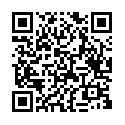The link between technology (metadata, language, hypertext, hypervideo or Mepg for example), economy and human behavior must be considered.
One of interactivity’s particularities as regards the medium of television is the opportunity for greater viewer “feedback”, allowing the viewer to become a veritable “transmitter” and not only a “passive” spectator.
The quantity of information contained in this return flow was strongly increased with the introduction of digital compression to the audiovisual field. The possibility for the broadcaster to handle this information in real time, thanks to a new generation of structured and descriptive language, considerably reinforces the role of an exchange inherent to this process. The concept of interactive television may be understood through technological, economic or communicational aspects.
New relationships made possible by interactivity are based on three essential types of functions: semiotic, epistemic and ergonomical. By way of these axes emerge other forms of relating and accessing knowledge.
Television, now experienced though the proprioceptive, tactile and kinesthetic senses, opens the doors for new dramatic forms. Interactivity can be viewed as a tool of mediation which permits a better appropriation of the flow of information. It is in this transactional role that another manner of experimentation appears: “the logic of experimentation”.
![[CiteULike]](http://www.alain-vaucelle.fr/wp/wp-content/plugins/bookmarkify/citeulike.png)
![[del.icio.us]](http://www.alain-vaucelle.fr/wp/wp-content/plugins/bookmarkify/delicious.png)
![[Digg]](http://www.alain-vaucelle.fr/wp/wp-content/plugins/bookmarkify/digg.png)
![[Facebook]](http://www.alain-vaucelle.fr/wp/wp-content/plugins/bookmarkify/facebook.png)
![[Google]](http://www.alain-vaucelle.fr/wp/wp-content/plugins/bookmarkify/google.png)
![[Jamespot]](http://www.alain-vaucelle.fr/wp/wp-content/plugins/bookmarkify/jamespot.png)
![[LinkedIn]](http://www.alain-vaucelle.fr/wp/wp-content/plugins/bookmarkify/linkedin.png)
![[MySpace]](http://www.alain-vaucelle.fr/wp/wp-content/plugins/bookmarkify/myspace.png)
![[Reddit]](http://www.alain-vaucelle.fr/wp/wp-content/plugins/bookmarkify/reddit.png)
![[Squidoo]](http://www.alain-vaucelle.fr/wp/wp-content/plugins/bookmarkify/squidoo.png)
![[Technorati]](http://www.alain-vaucelle.fr/wp/wp-content/plugins/bookmarkify/technorati.png)
![[Twitter]](http://www.alain-vaucelle.fr/wp/wp-content/plugins/bookmarkify/twitter.png)
![[Windows Live]](http://www.alain-vaucelle.fr/wp/wp-content/plugins/bookmarkify/windowslive.png)
![[Email]](http://www.alain-vaucelle.fr/wp/wp-content/plugins/bookmarkify/email.png)
